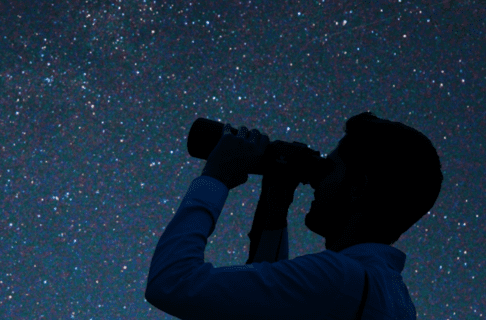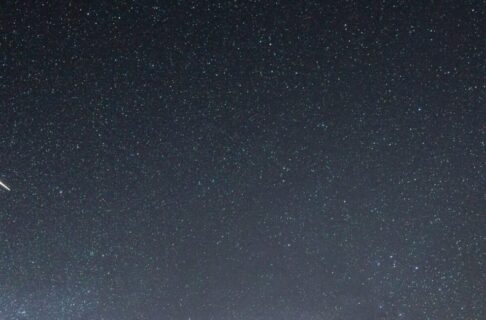Posted on: Friday March 1, 2024
March hosts the “first day of spring”, although someone forgot to tell that to the weather. Astronomically, spring begins when the Earth reaches a specific point in its orbit around the Sun – it’s an easily-measurable instant in time when the Sun rises due east, sets due west, and is in the sky for 12 hours a day. Usually, the weather takes several weeks to catch up to that, but so far Manitoba has had three “winters”, two “autumns” and a “spring” since January 1, so the equinox is becoming less useful as an indicator.
March is also when we “spring ahead”, moving our clocks forward one hour to the poorly-named “Daylight Savings Time”. (Spoiler: no daylight is saved, we just alter our schedule so that people who work 9-5 see a bit more of it after their work day is done.) The official change happens in the morning of March 10th: 1:59 a.m. Central Standard Time is followed by 3:00 a.m. Central Daylight Time. We lose an hour of sleep that night, so expect inattentive drivers, cranky coworkers, and other symptoms of poor sleep to crop up in your life for the following week or so.
The Solar System
The planets are described in the order they are most visible in this month’s Manitoba skies.
Solar System Highlights
There is a penumbral lunar eclipse on March 24-25 which is visible across Canada. See the Calendar entry below.
Mercury is at its best evening visibility of the year for Canadians, peeking up above the western horizon in evening twilight about the 12th and rising higher each night until greatest elongation from the Sun with occurs on the 19th. It will probably easiest to see on the few days around March 16 when it is as its brightest and near its highest above the horizon.
Jupiter is visible in the west-southwest after sunset, and sets before midnight local time. Telescopic observers will want to catch it early before it sinks into the turbulent air near the horizon.
Uranus sits above Jupiter in the evening sky, in the direction of the Pleaides star cluster. Only easily spotted in binoculars or a telescope, Uranus looks just like a faint dot of light indistinguishable from any other star.
Mars is higher than Venus in the pre-dawn sky but much fainter, making it difficult to observe until near the end of the month. Mars will return to prominence in the second half of 2024 but until then it remains a less-than-impressive object.
Venus remains very low in the south-southeast just before sunrise, only visible because of its great brilliance. It passes very close to Saturn on the mornings of March 21 and 22, but the low altitude above the horizon makes this event probably unobservable for Manitobans.
Saturn is invisible for most of the month after its February 28 conjunction with the Sun. It reappears in the morning sky towards the end of the month, very low in the southeast before sunrise.
Neptune reaches solar conjunction on the 17th, and is unobservable for the month.
Celestial Calendar for March 2024
Sun Mar. 3 (evening): A celestial event on Earth – Bill Nye “the Science Guy” will be speaking live at the Manitoba Centennial Concert Hall on his “The End is Nye” tour. Planetarium Astronomer Scott Young will introduce Bill and moderate the Q&A session. Showtime is 7:30 pm.
Fri Mar. 8 (morning): The razor-thin waning crescent Moon is very low below Venus and Mars just before sunset, but all three are very low in the sky and likely invisible unless you have a very clear atmosphere and flat horizon to the southeast.
Fri Mar. 8 (evening): The monthly meeting of the RASC Winnipeg Centre, the Manitoba chapter of Canada’s largest astronomy club. Meetings are open to the public, and details can be found here.
Sat Mar. 9 to Sun Mar 10: Daylight Savings Time begins: Remember to set your non-internet clocks forward 1 hour late on Saturday March 9 or after midnight on Sunday, March 10, to ensure your circadian rhythms are as messed up as everyone else’s.
Wed Mar. 13 (evening): The waxing crescent Moon is to the right of Jupiter in the evening.
Wed Mar. 14 (evening): The waxing crescent Moon is close to the Pleiades star cluster, with those farther west seeing a closer approach.
Sat Mar.23: Spring Break begins at the Manitoba Museum! 10 days of programming, exhibits, and hands-on science, plus the premiere of a new planetarium show!
Sun Mar. 24 to Mon Mar. 25 (morning): A minor lunar eclipse occurs in the wee hours of the 25th. Not the “blood moon” of a total lunar eclipse, the moon only passes through the outer part of Earth’s shadow. These penumbral lunar eclipses are easy to miss if you aren’t watching for them, since the bright Moon doesn’t look too different minute to minute and there are no major colour changes. Still, they are interesting to watch, and the Planetarium’s Dome@Home astronomy show will host a live-stream of the event beginning at 11:30 pm on the 24th.
Thu Mar. 28 (evening): Dome@Home, the Manitoba Museum’s award-winning online astronomy show, runs at 7 pm. Central time on the last Thursday of every month on the Museum’s Facebook page and YouTube channel. This episode will feature the April 8 solar eclipse, including how you can safely watch the event as it unfolds from anywhere in Manitoba.
Other Astronomy Resources
To learn when the International Space Station and other satellites are visible from your location, visit Heavens-Above.com and select the closest city or town to you.
For information on Manitoba’s largest astronomy club, visit the Royal Astronomical Society of Canada – Winnipeg Centre.






